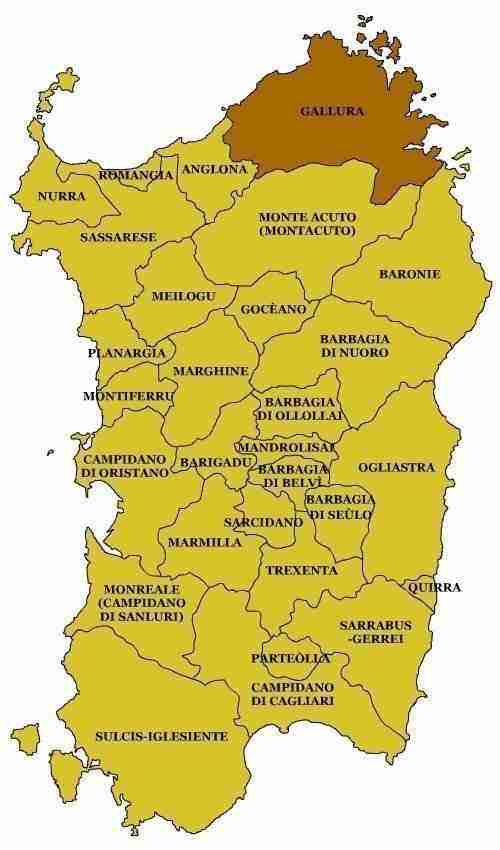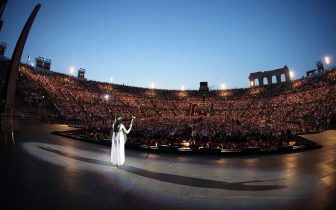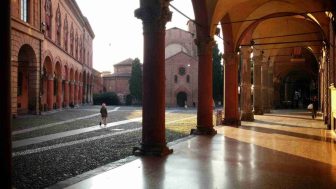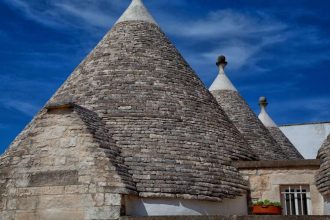
A week in northern Sardinia, in the subregion of Gallura, filled my head with so many stories and my soul with so much good energy, I had trouble thinking about how best to summarize the experience.
So I thought it would be best to start with the basics.
Where is Gallura?
Sardinia is the second largest island in the Mediterranean (after Sicily) and is located south of the French island of Corsica and due west of mainland central-south Italy, across the Tyrrhenian Sea from the regions of Lazio and Campania.

Gallura is the northeastern-most subregion of Sardinia. It’s best known for the Costa Smeralda (Emerald Coast) and the Maddalena Archipelago.
Why to Go to Northeastern Sardinia/Gallura
Sardinia Is Closer To Mainland Italy Than You Might Think

Though I had longed to visit Sardinia for many years, it seemed like a hassle to visit. It is so easy to get around Italy by car and train that I kept putting off a Sardinia trip simply because it meant that I had to go to the airport.
Had I done my research earlier, I would have realized that a flight to Olbia takes less than an hour from Rome — quicker than a fast train to Florence or Naples. I flew on Air Italy (a Sardinia-based airline that sadly folded in 2020), but there are several other small carriers that fly there.
You can also take the ferry. It takes longer, of course. But an overnight ferry is ideal if you want to take a car for driving around the island. (Make sure you check to see if your rental car company allows this.) My friend Martha has good information about taking your car on the overnight ferry to Sardinia.
Unmatched Natural Beauty

Flying into Olbia provides a teaser of the beauty that awaits — sky melts into sea, creating an almost disorienting portal of blueness leading to a long stretch of green mountains. Karim Aga Khan, the visionary investor that is credited with putting the Costa Smeralda on the jet set map, sailed into this area in 1959 and was immediately taken by the quality of the sea, which has hues “ranging from the darkest blue to the purest green.”

Those blue, green, and aquamarine waters lap up against white — and even pink! — sand beaches. Green mountains and rocky ridged islands shaped by wind and weather, such as Tavolara, frame the expansive landscape. There are even hints of mountainous northern Italy in the Dolomiti Sarde, which rise dramatically behind the town of San Pantaleo.
Almost every region in Italy can claim to provide the mountains and the sea. But few can deliver that promise within a single glimpse the way northern Sardinia can.
A Dose of Mystery and Unknown History

Most travelers visit mainland Italy with a general sense of its past. Ancient Rome. Medieval pageantry. Renaissance art and invention. Northern Sardinia — indeed, Sardinia as a whole — has a history and a folklore that developed in isolation, yet also with the influence from various conquerors and trading partners, from the Phoenicians to the Spanish Empire.
Remnants from the prehistoric Nuraghi, an ancient people that lived here from about 1,900 BC to 730 BC (aka the Bronze Age), dot the island. There are approximately 8,000 rock formations, from megalithic fortresses and towers to stony tombs to other Stonehenge-like mysteries to be explored, including the Nuraghe Majori in Tempio Pausania, Li Muri in Arzachena, and the Riu Mulinu in Olbia.

The mountainous area of Gallura also has peculiar and eerie folklore, including that of the Accabadora. In addition to being a midwife, ushering in new life, the Accabadora was, as legend held, hired to help families put an end to the lives of the old and infirm. Her weapon of choice? A large, wooden mallet which, when used in just the right place and with just the right amount of force, could kill with a single blow.
I learned about the legend (or truth) of the Accabadora, also known as the Agabbadora or Femmina Agabbadora, at the Museo Galluras, which contains a trove of dusty, mysterious trinkets from Gallura’s more recent past.
Sardinia’s unique history intrigued me and left me wanting to learn more.
An Antidote to Overtouristed Italy…If You Time It Right

Prior to arriving in Gallura, I was in Rome. It was the end of September, technically the shoulder season, but I was still dodging other tourists at nearly every turn.
Sardinia was different. Finally, I could breathe.
The irony that I write about travel to Italy but complain about overtourism in Italy doesn’t escape me. But I was pleasantly surprised when I flew from my beloved but overcrowded Rome to a land that was quiet, with only a trickle of tourists still hanging around on beaches and by the pool.
They say that September is the best time to visit Sardinia, “they” being Gallura locals who know that the sun is still bright and the waters are still warm enough to swim during this time. The locals, many of whom make their living off of tourism, are also starting to exhale in September after a nonstop crush of visitors in July and August.
Because it is heavy on beaches and outdoor activities, Sardinia has a tourist season that runs from about April/Easter until mid-September. Most hotels and tours shutter during the winter in order to give overworked employees time to recuperate and ferries don’t run as often. So planning a Sardinian vacation in the true off-season could be difficult. Still, May and June are said to be busy, but pleasant times on the island.
Conclusion
Northern Sardinia, Gallura, is truly a special part of Italy. I can’t believe I waited so long to visit. And I can’t wait to go back.
Last updated on May 17th, 2023Post first published on October 17, 2019






